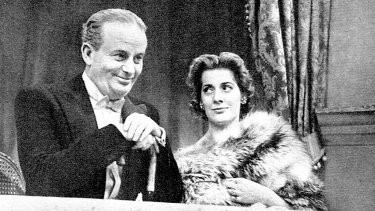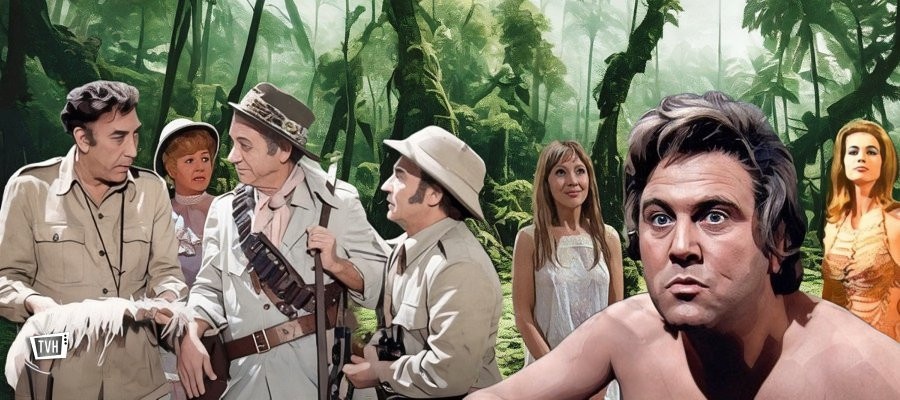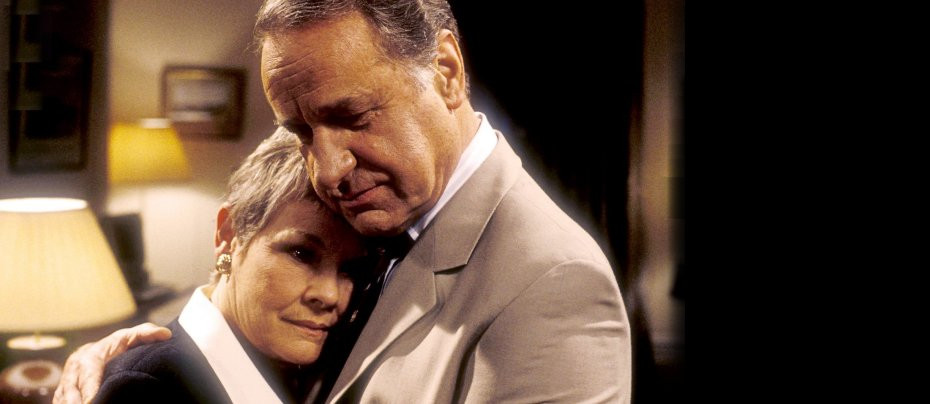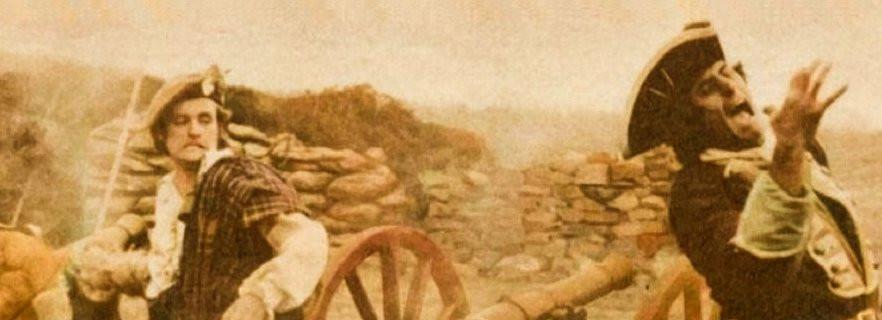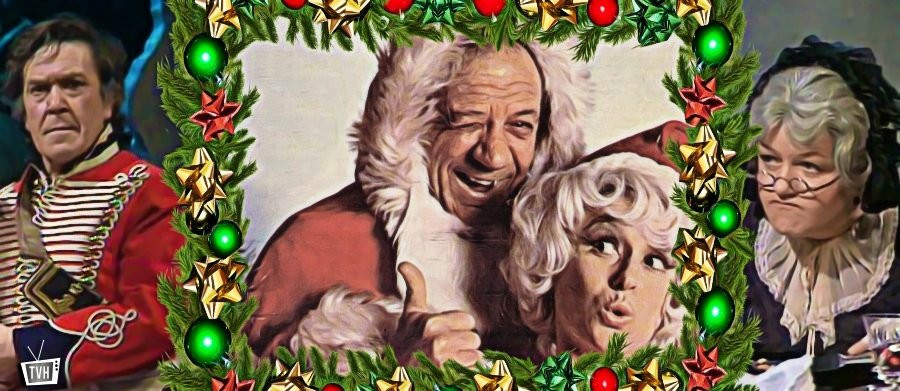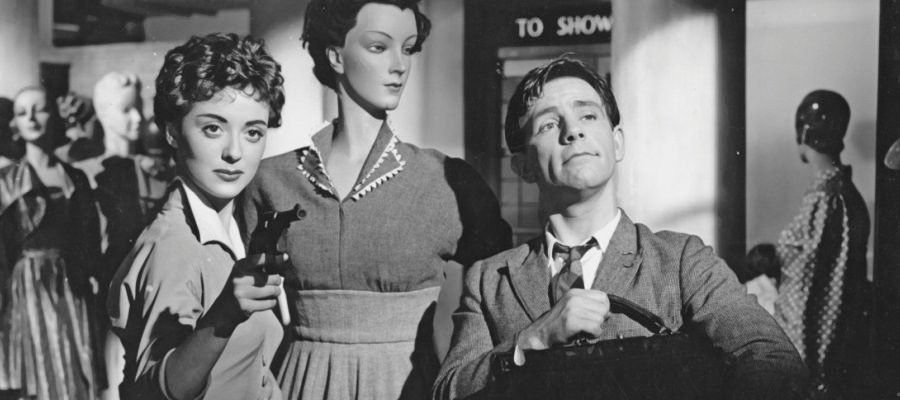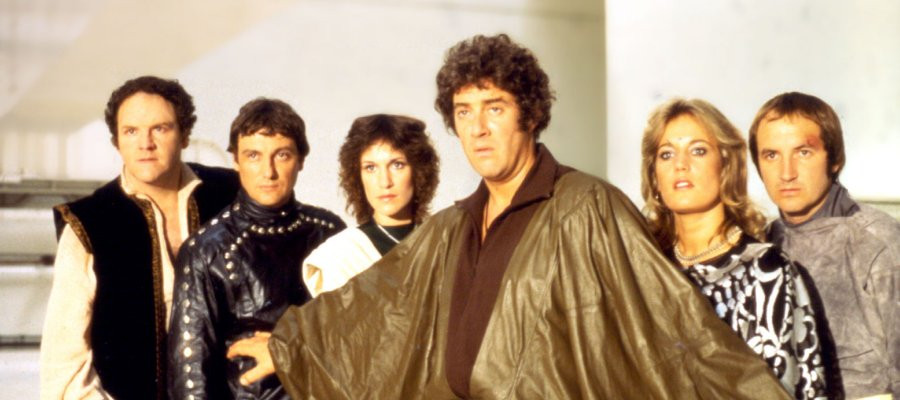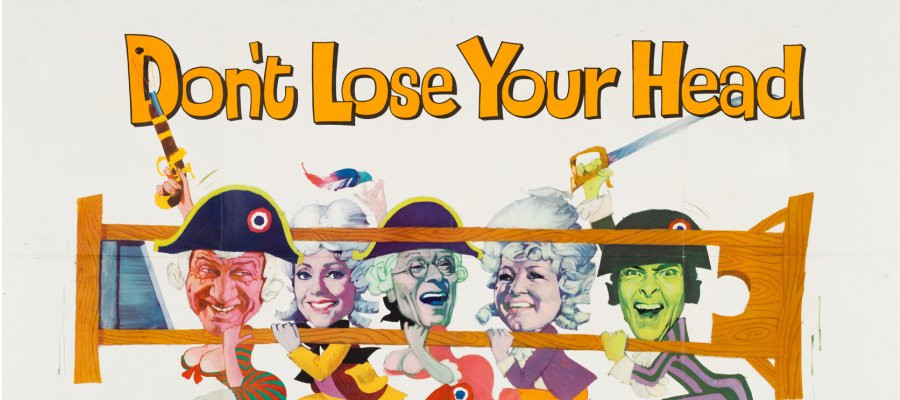
Carry On Don't Lose Your Head
Review: John Winterson Richards
Like Carry On Jack what eventually became Carry On Don't Lose Your Head was initially not intended to be a Carry On film at all, even if what looks, swims, and talks like a duck is pretty obviously a duck. In a classic case of rank stupidity, the Rank Organisation, which had just taken over the franchise from Anglo Amalgamated Film, seemed strangely oblivious to the power of the by then very well established Carry On brand name they had just acquired. As a result, it was first released simply as Don't Lose Your Head and became Carry On Don't Lose Your Head only on rerelease. This may be why it is often overlooked unfairly in discussions about which is the best Carry On because it surely deserves to be a serious contender alongside Carry On Cleo and Carry On Up the Khyber.
Just as most of the other historically themed Carry On films are less parodies of history than of specific modern cultural depictions of history, Carry On Don't Lose Your Head is not about the French Revolution so much as Baroness Orczy's romantic novel The Scarlet Pimpernel, which is set in the French Revolution, and its film adaptations, especially those starring Leslie Howard and David Niven in the title role. Since the novel is of questionable historical value, the film adaptations even more so, and Carry On in general not noted for academic rigour, Don't Lose Your Head should not be considered as an authoritative account of conditions in France in the last decade of the 18th Century.

Yet as usual there are at least hints of history in the "historically" themed Carry On films and such is the case here. It is fair to say that what started as a sensible movement for modernisation and reform by a relatively liberal French Monarchy got badly out of hand, as power went to the heads of new people in charge, eventually resulting in, among other things, the grisly public executions of thousands of mostly innocent victims in front of bloodthirsty mobs. While there are some extraordinary real life escape stories, that the English upper classes set up an organisation to liberate their French counterparts is, sadly, a case of fictional wish fulfilment. There really is nothing funny about what really happened - but that never stopped the Carry On crowd.
This is in keeping with the increasingly dark tone of the Carry On films from Carry On Jack onwards. It is all fun and games when "The Black Fingernail" is rescuing stereotypical French aristocrats, still dressed in their Versailles best, from Madame Guillotine, but one cannot help think of those left behind.
The Black Fingernail is of course the equivalent of the Scarlet Pimpernel, a daring adventurer who hides his identity, and his true nature, behind his carefully cultivated public image as an effete Baronet. There is an element of historical truth in this in that many of the fashionable "dandies" who posed around London and seemed interested only in clothes actually proved to be surprisingly brave in the subsequent French Revolutionary and Napoleonic Wars.
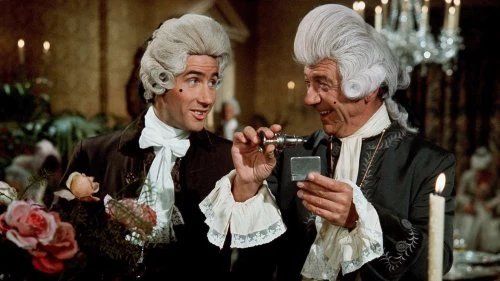
The Fingernail is really Sir Rodney Ffing, "with two f's," pronounced "effing," played by Sid James. Here he is unambiguously the heroic lead, taking over that role from Jim Dale, who instead plays his sidekick, Lord Darcy Pue. The two of them make a great double act, affecting bored, artificially high pitched accents in their personae as idle rich men about town, their voices suddenly dropping an octave and sounding noticeably more working class as they become more conspiratorial when there is serious work to be done.
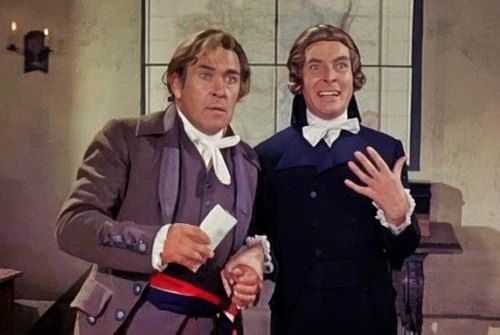
They are opposed by another great Carry On pairing, Kenneth Williams as Citizen Camembert, the Big Cheese of the French Secret Police, and Peter Butterworth as his assistant, Citizen Bidet. Butterworth having proved himself in a supporting role in Carry On Cowboy effectively joins the principals here and never looks back. Both are fanatical Revolutionaries, but where the dim Bidet is wholly sincere, Camembert, like many of the Revolutionaries in real life, is also taking the opportunity to enrich himself with estates and expensive possessions seized from the old nobility while still considering himself true to the Revolutionary ideology: this is his idea of redistributing wealth. His demanding mistress, Desiree, played by Joan Sims on top form, is a vulgar social climbing commoner who, with the snobbery of the true working class, yearns to be an aristocrat herself, much to Camembert's embarrassment.
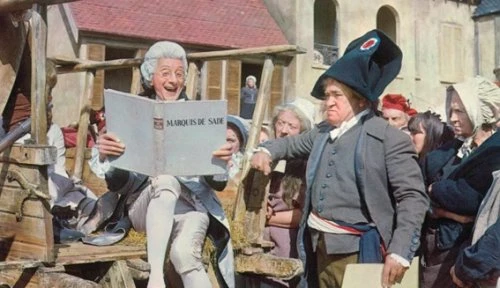
Charles Hawtrey enjoys what might be his best Carry On role as the lecherous Duc de Pommfrit. The sequence is which he is introduced has some of the most hilarious bad jokes in the whole series. This sequence is also enlivened by a superb guest turn by the criminally underrated Leon Greene (A Funny Thing Happened on the Way to The Forum, The Devil Rides Out) as the public executioner who is given the wonderful name of Malabonce. Incidentally, the real public executioner was called Sanson and was one of a family of hereditary headsmen who kept the office for over a century throughout all the changes of regime in France, frequently executing the people for whom they had previously worked. Amid the bloody chaos of the Revolution the professional executioners were the ones who kept their heads in every sense.
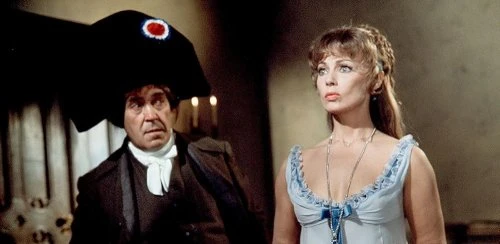
The pretty French actress Dany Robin is brought in as James' very unlikely love interest. It is said that her casting was the result of overoptimistic hopes of increased foreign sales, but the truth is that Carry On was always too distinctively British for that ever to have been a realistic option. Peter Gilmore is, for once, slightly miscast as Robespierre, who was in reality a weedy sort of fellow who fainted at the sight of blood. Blink and you will miss Jacqueline Pearce (Blake's 7) rejecting Hawtrey's advances. Patrick Allen's distinctive tones provide a typically authoritative sounding voice over.
The production values seem to be at their peak, at least by Carry On standards, with location work at Cliveden House as the exterior of Ffing Hall (it was a pleasure to discover while fact checking this piece that there really is a place called Finghall but apparently not pronounced the same way) with Clandon Park House providing its Ball Room, Waddesdon Manor in Buckinghamshire as the French Chateau Neuf where Camembert stores his loot, and St Mary's Church in Denham, a frequent backdrop to weddings in films and on television, doing the same here. It has to be noted, however, that many of the costumes used were slightly out of fashion by this point in the French Revolution. There are a couple of well-choreographed action scenes and good use of props, even if, like Camembert, the cultured viewer might become distressed at the destruction of what, in some cases, look like actual antiques - that people used to be more casual about such things is one reason why they are, sadly, much rarer today.
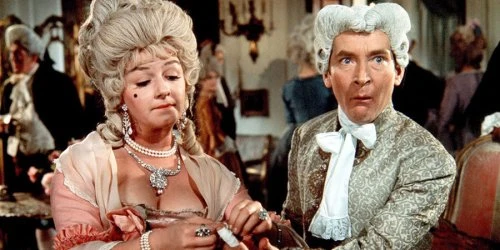
The series' regular composer Eric Rogers, no relation to Peter Rogers the producer, really surpassed himself on this one, especially with clever variations on Boccherini's Minuet and the Beatles' 'She Loves You.' The rousing theme song that opens the film is however credited to Bill Martin and Phil Coulter, and "executed by" Mike Sammes.
The dialogue is snappy and includes some of the best passing jokes in the franchise as well as some of the best names. Above all it stars most of whom might be termed the A-Team of the Carry On principals at their absolute peak, by which time they had found their Carry On characters and were comfortable with them but before a tangible sense of boredom began to set in a few years later. One gets the impression that they were really enjoying themselves at this point.
Published on April 28th, 2025. Written by John Winterson Richards for Television Heaven.


